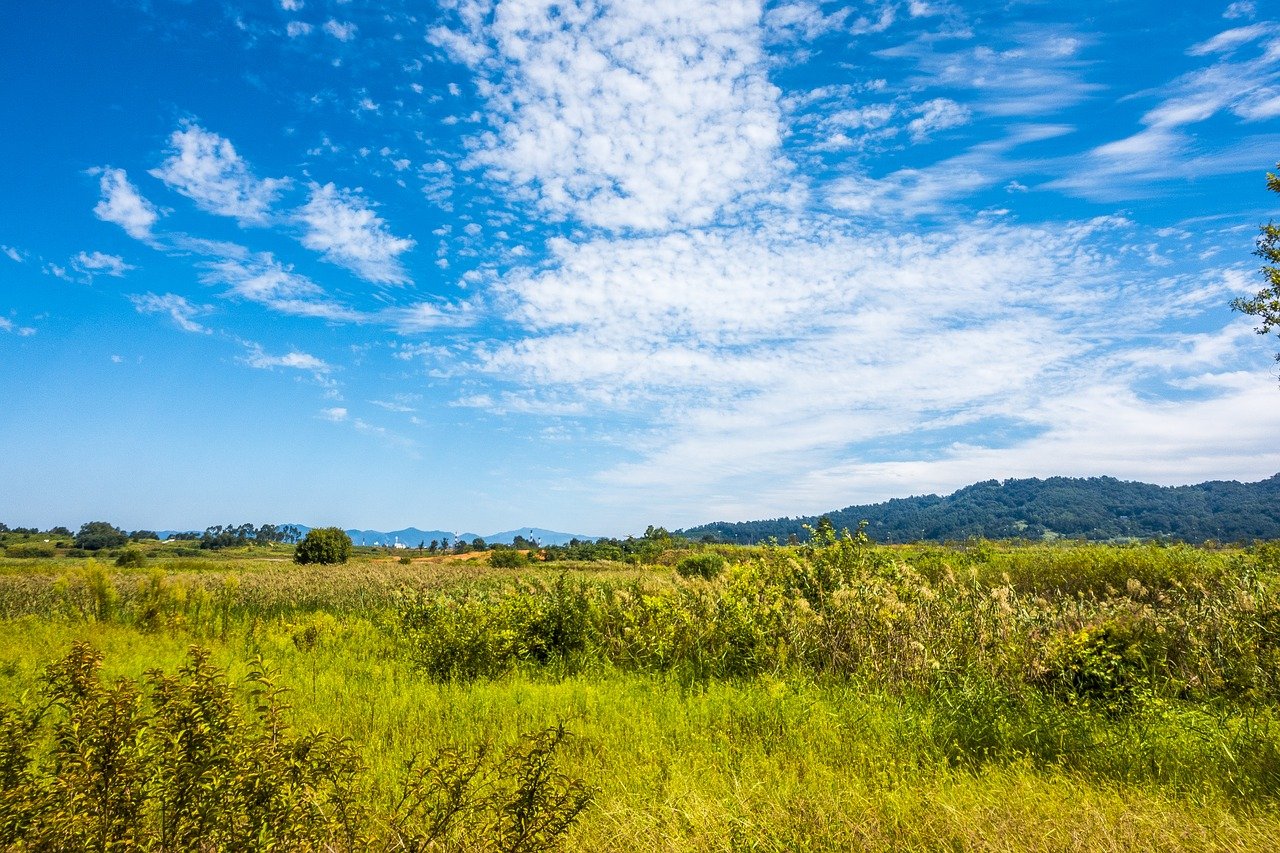
Article Summary: Kansas National Parks
Kansas National Parks! While Dorothy & Toto might not be in Kansas anymore there’s no reason why you can’t be there. As a matter of fact, More Than Just Parks is going to give you 8 compelling reasons why you should consider Kansas when planning your next roadtrip.
And More Than Just Parks is your one-stop-shop when it comes to learning everything you’ll need to know about America’s national parks.
We’ve got expert guides, beautiful photos, helpful tips, breathtaking films and so much more.
I’ve been to so many of these amazing places since retiring from teaching in 2018. Did I mention that I taught history? I spent a lifetime teaching about the history behind these momentous sites. Then I got to see them firsthand. And now I’m sharing the stories of these incredible places with you. It doesn’t get any better than that!
While Kansas has many national park sites, I should note that it doesn’t actually have any congressionally designated “National Parks.” Nonetheless, there are a whole host of amazing Kansas National Park Service sites to visit.

What Is A National Park?
We get asked that question a lot because there’s a difference between a “national park” and a “national park site.” To help you understand that difference you might want to check out our article titled: What Is A National Park Really?
If you’re planning to visit the Sunflower State then one book I highly recommend is: Kansas Bucket List Adventure Guide: Explore 100 Offbeat Destinations You Must Visit!
We’ve got historic forts, famous explorers, beautiful prairies, the fastest mail service in the Old West, and so much more await you in Kansas!
Are you ready to dive in? Let’s go!

Table Of Contents: Kansas National Parks
Kansas National Parks
1. Brown V. Board Of Education National Historic Site
The Brown v. Board of Education National Historic Site is located in Topeka, Kansas. It commemorates the landmark U.S. Supreme Court case of Brown v. Board of Education.
The case was brought by a group of African American families who argued that segregation in public schools was inherently unequal and violated the 14th Amendment of the U.S. Constitution, which guarantees equal protection under the law.
The history of the case began in 1951 when a young African American girl named Linda Brown was denied enrollment in an all-white school near her home in Topeka.
Her father, Oliver Brown, along with a group of other African American families, sued the Topeka Board of Education, arguing that segregation in public schools was a violation of the 14th Amendment.

The Court Declared Segregation To Be Unconstitutional
The case was consolidated with similar cases from other states and became known as Brown v. Board of Education. The case was heard by the U.S. Supreme Court in 1954, and on May 17th of that year, the Court issued a unanimous decision declaring segregation in public schools to be unconstitutional.
The decision was a landmark moment in the Civil Rights Movement and has had far-reaching effects on the struggle for equality in the United States.
The Brown v. Board of Education National Historic Site was established in 1992 to commemorate the landmark case and to educate visitors about its significance in American history.
The site includes a museum that features interactive exhibits and educational programs, as well as the restored Monroe School, one of the all-black schools that was involved in the case.
Today, the Brown v. Board of Education National Historic Site is an important place of remembrance and reflection, and serves as a reminder of the ongoing struggle for equality and justice in the United States.
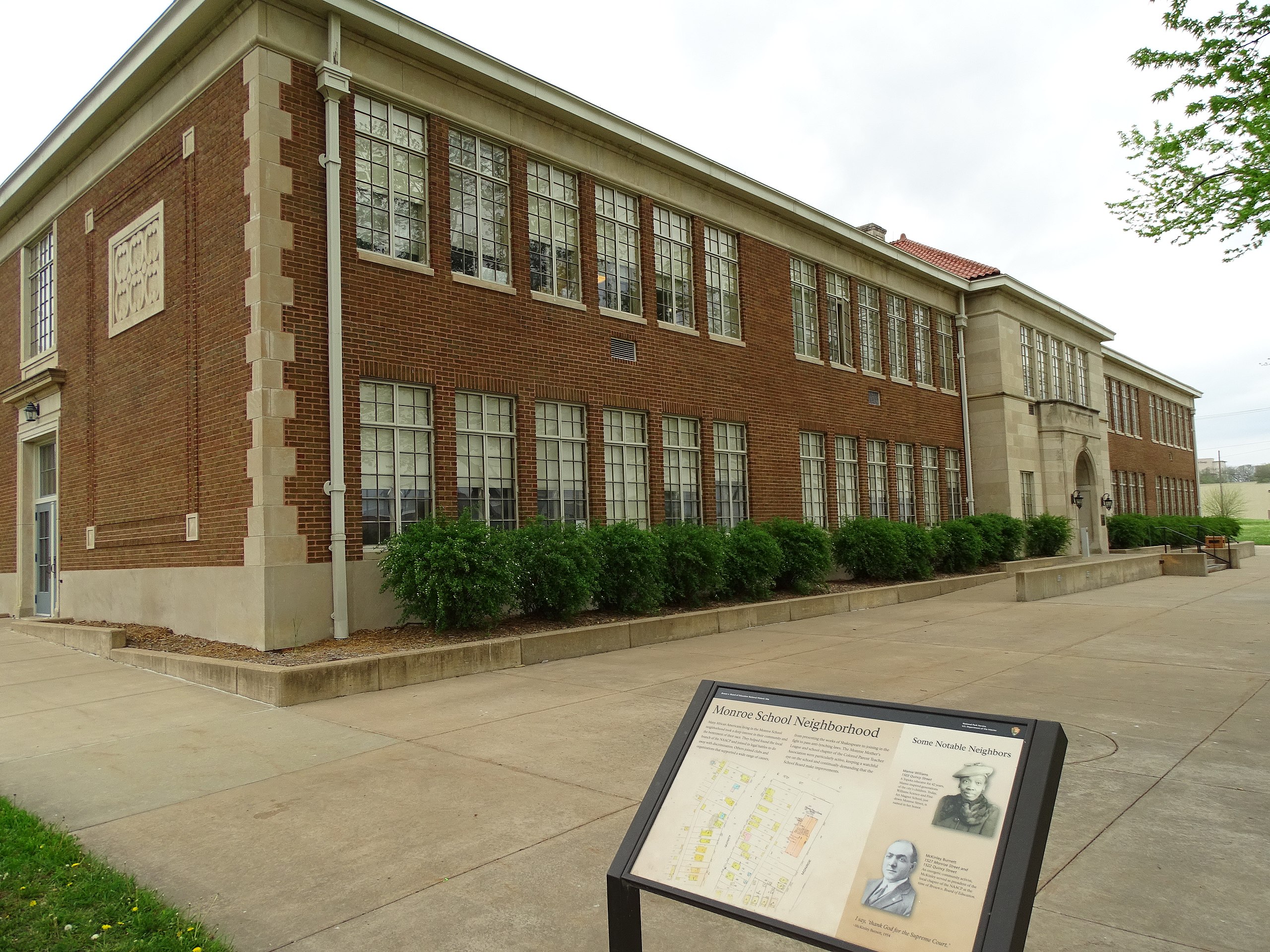
CHECK OUT: 10 BEST Civil Rights Sites In America
Take A Deeper Dive
Believe it or not, I was one of those guys who sat in class taking notes and, when the professor threw out the name of what sounded like an interesting book, I not only wrote it down, I went out and purchased it. Yes, I am that guy which is why I ended up teaching history.
Now while I promised no homework, there’s a wonderful book about the landmark Supreme Court decision for those of you who are interested in taking a deeper dive.
Written by Richard Kluger, it’s titled Simple Justice: The History of Brown v. Board of Education and Black America’s Struggle for Equality. It’s a modern classic!
RELATED: 45 Best National Parks Books (Great Gifts For Park Lovers)
2. Fort Larned National Historic Site
Fort Larned National Historic Site was established in 1859, as a military post along the Santa Fe Trail, a major trade route between Missouri and Santa Fe, New Mexico.
The fort was named after Colonel Benjamin F. Larned, who was a Quartermaster General during the Mexican-American War. The initial purpose of the fort was to protect travelers and freight along the Santa Fe Trail, as well as to maintain peaceful relations with the Plains Indians.
During the Civil War, the fort was used as a supply depot for Union troops and as a base for campaigns against the Confederate Army. After the war, the fort resumed its original mission of protecting travelers and maintaining relations with the Plains Indians.
Over the years, Fort Larned played an important role in the settlement of the West. The fort served as a hub of activity for soldiers, traders, immigrants, and Plains Indians, and it played a pivotal role in the shaping of the American West.
In 1964, the fort was designated as a National Historic Site by the United States government, in recognition of its historical and cultural significance.
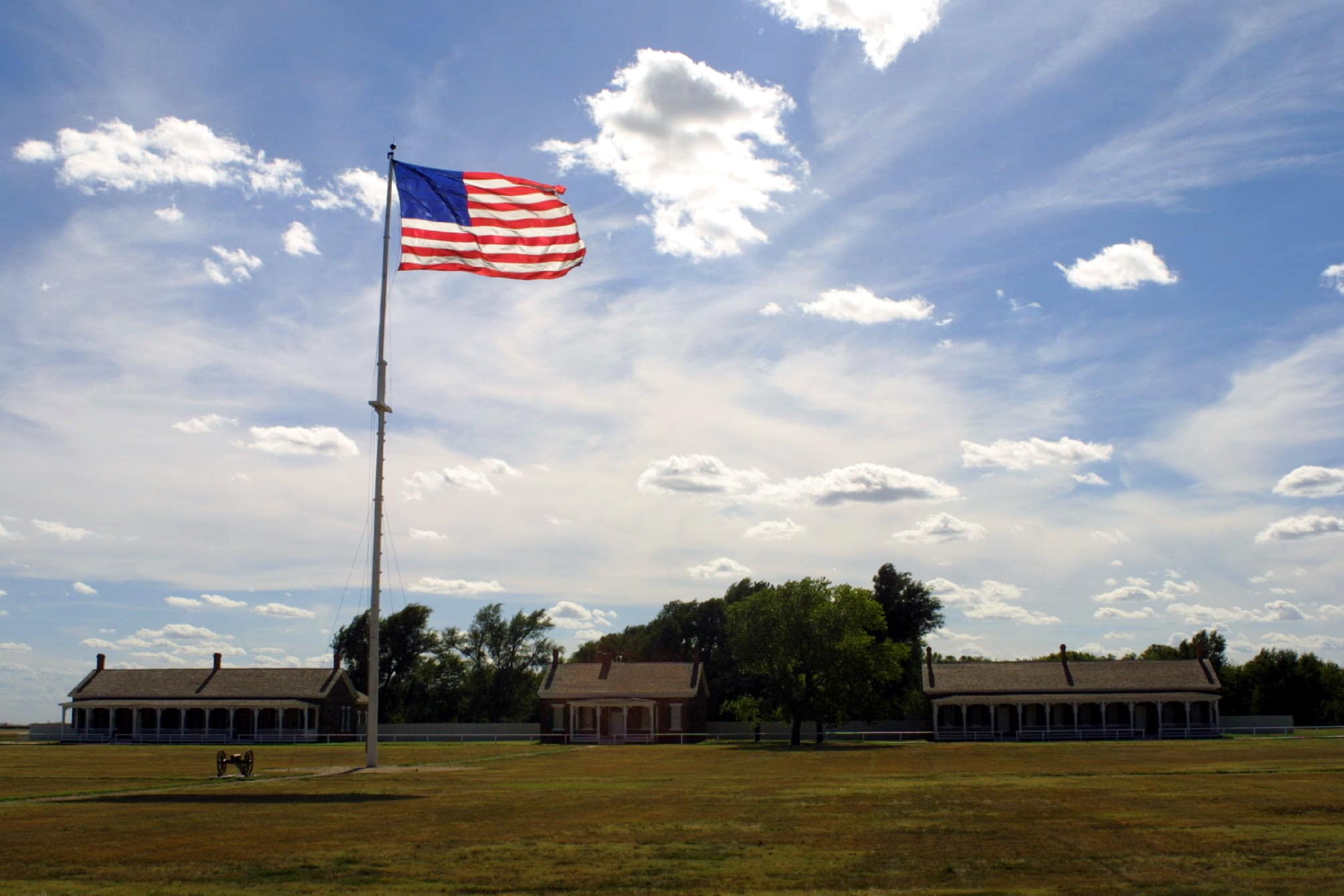
The Fort Was Home To A Famous Civil War General
The fort was home to a diverse population, including soldiers, civilians, and Native Americans. The fort was also home to a number of notable figures, including General William T. Sherman, who served as the commander of the fort in the early 1860s.
In 1878, the fort was officially decommissioned and the buildings were sold to private individuals. However, several of the original buildings were preserved and are now open to the public as part of the Fort Larned National Historic Site.
Visitors can tour the restored buildings and learn about the history of the fort and the people who lived and worked there. The park also offers a variety of educational programs and special events throughout the year.
The fort is a National Historic Landmark and is open to the public year-round. Visitors can take a self-guided tour of the restored buildings and learn about the history of the fort and the people who lived and worked there.
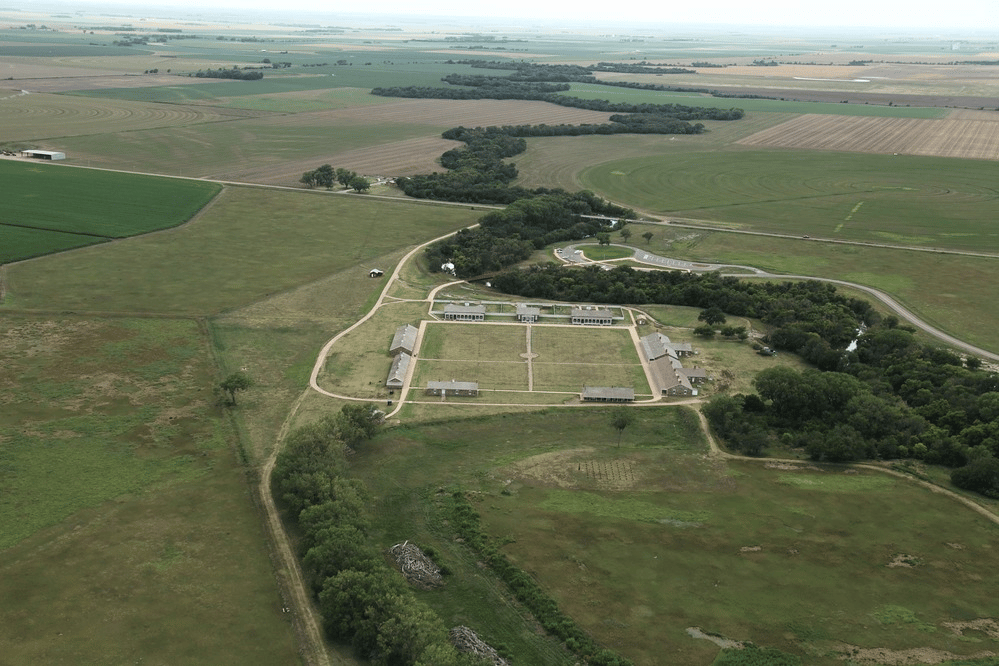
CHECK OUT: 10 BEST Civil War Sites In America
3. Fort Scott National Historic Site
Fort Scott was an active military post for over 20 years, and during its active years, the fort served as a supply depot, a military headquarters, and a base of operations for the U.S. Cavalry.
The fort was also used as a base for patrols and expeditions to protect the Santa Fe Trail, which was a vital transportation route for settlers and traders moving westward, and to maintain peace among the various Indian tribes of the Great Plains.
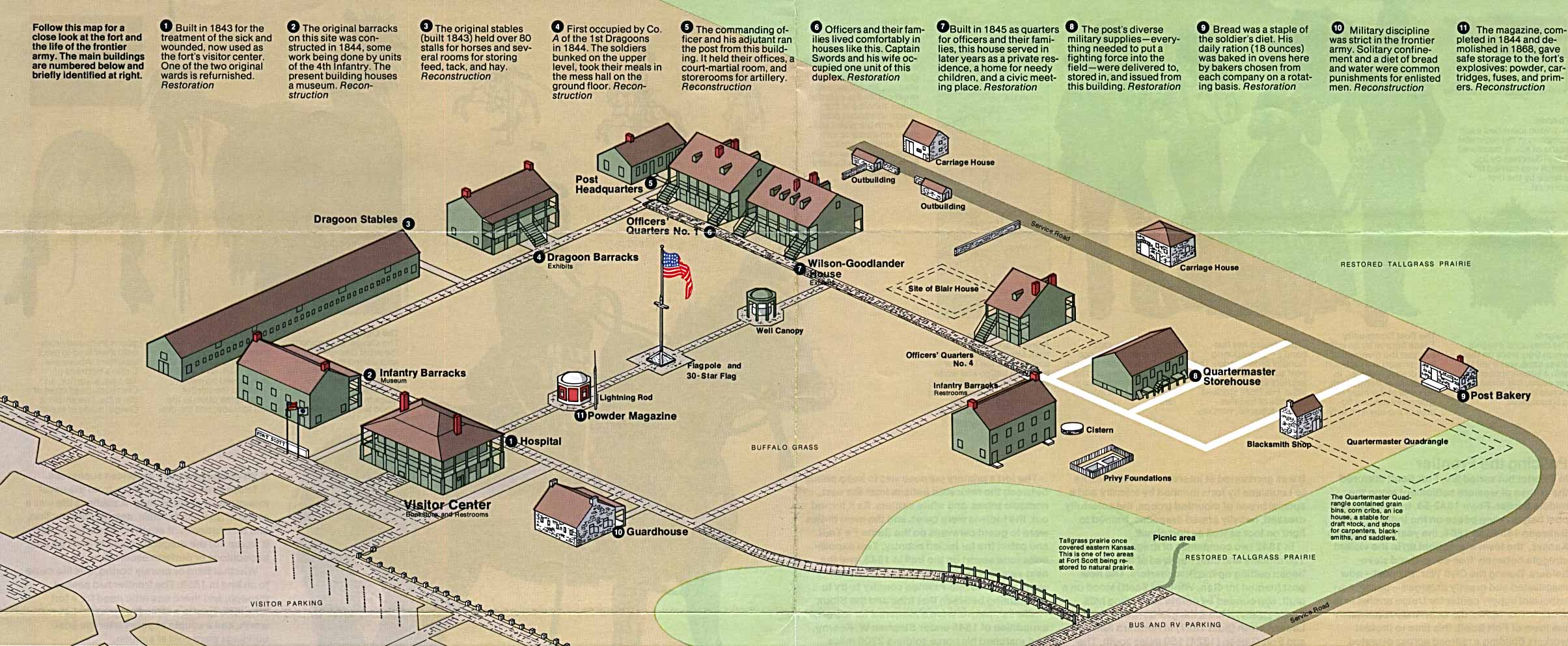
The fort was home to a diverse population, including soldiers, civilians, and Native Americans.
The fort was also home to a number of notable figures, including General Winfield Scott, who served as the commander of the fort in the early 1840s.
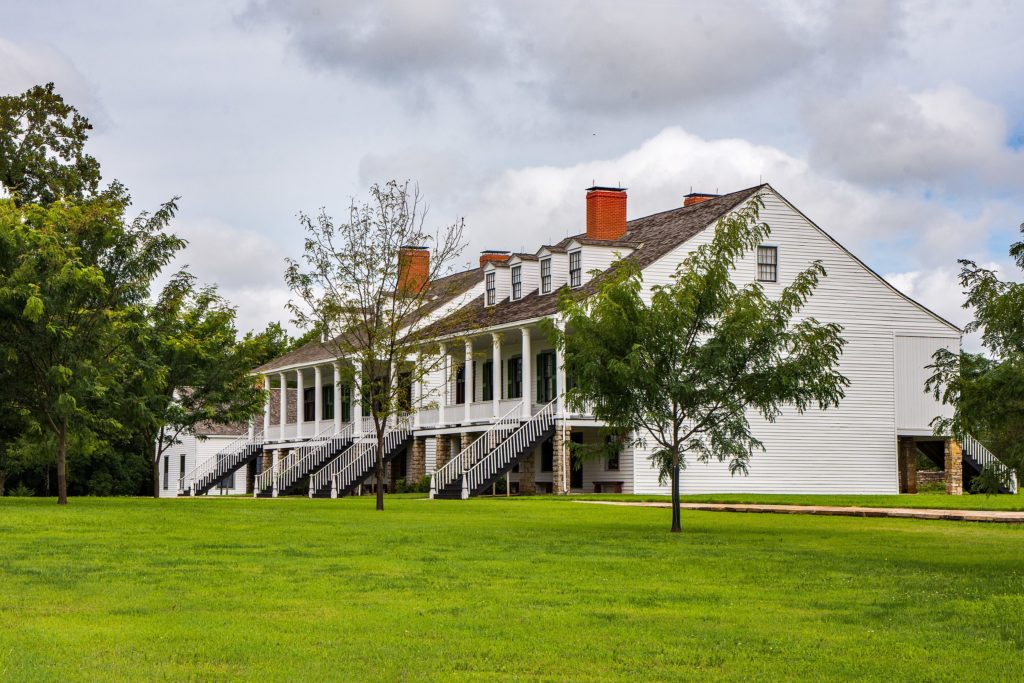
In 1853, the fort was officially decommissioned and the buildings were sold to private individuals. However, several of the original buildings were preserved and are now open to the public as part of the Fort Scott National Historic Site.
Visitors can tour the restored buildings and learn about the history of the fort and the people who lived and worked there. The park also offers a variety of educational programs and special events throughout the year.
RELATED: 10 BEST CIVIL WAR SITES IN AMERICA
4. Lewis & Clark National Historic Trail
From fascinating forts to legendary trails. You can find so much wonderful history when you explore the Kansas National Parks. And that history includes The Lewis and Clark National Historic Trail which follows the historic outbound and inbound routes of the Lewis and Clark Expedition.
Commemorating the Lewis & Clark Expedition (1804-06), the Trail connects 16 states (Pennsylvania, Ohio, West Virginia, Kentucky, Indiana, Illinois, Missouri, Kansas, Nebraska, Iowa, South Dakota, North Dakota, Montana, Idaho, Washington and Oregon).
This trail is administered by the National Park Service. It’s not a hiking trail, but does provide opportunities for hiking, boating and horseback riding at many locations along the route.
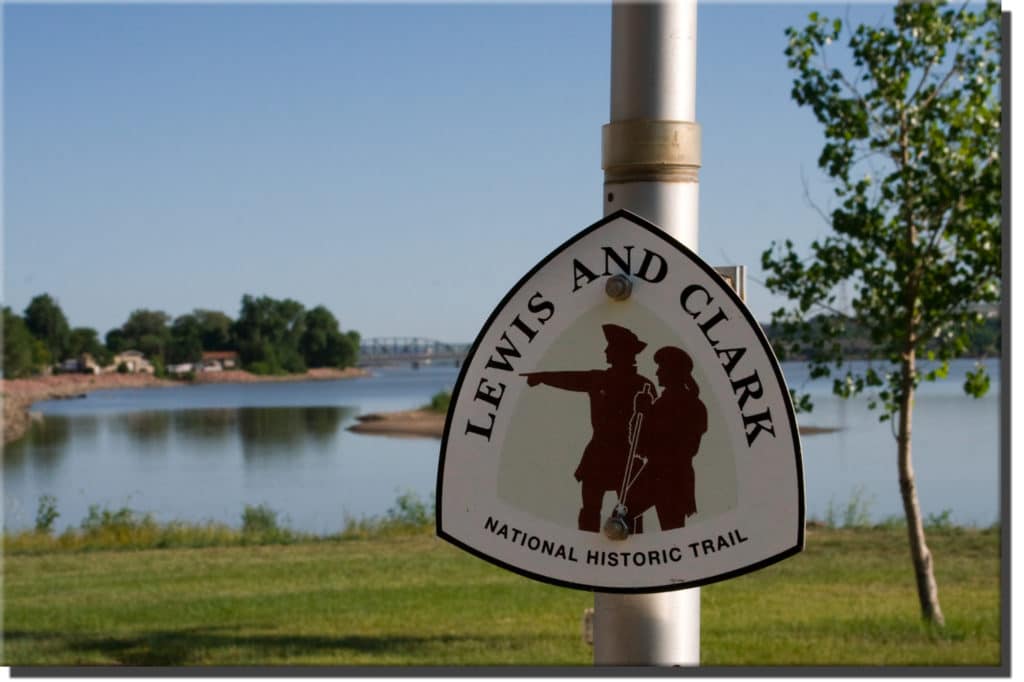
What Can I See In Kansas That’s Connected To This Historic Trail
What can I see in Kansas that’s connected to this historic trail? Excellent question. I recommend the Lewis and Clark Interpretive Pavilion. Located at White Cloud, Kansas, it describes the expedition’s passage through the area in 1804 and then again in 1806.
It’s a beautiful open-air pavilion located in Riverfront Park. It was constructed in preparation for the Lewis and Clark bicentennial Commemoration on July 3-4, 2004.
The pavilion contains an interactive touchscreen monitor and interpretive panels with information on the Lewis & Clark expedition, the Missouri River and the Kanza Nation.
While you’re there, I would also recommend a drive along the Frontier Military Historic Byway. It was originally built to move soldiers and supplies. If you travel it today, however, you’ll find various landmarks such as Fort Leavenworth and the John Brown Museum.
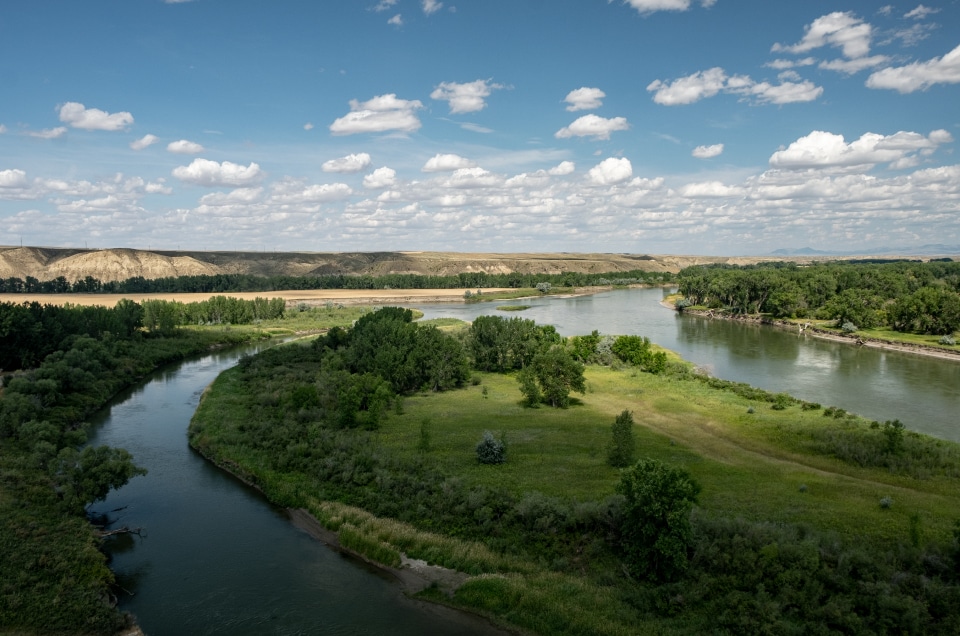
RELATED: 12 EPIC OREGON NATIONAL PARKS & MONUMENTS TO VISIT
More Kansas National Parks
5. Nicodemus National Historic Site
Nicodemus National Historic Site is dedicated to preserving the history of one of the first and largest settlements of African Americans in the American West.
The town was founded in 1877 by a group of African Americans who had moved from the South in search of a better life and greater opportunities.
Nicodemus was established as part of the Exoduster Movement, which was a mass migration of African Americans from the South to the West following the end of the Civil War. The town was named after the biblical figure Nicodemus, who symbolized new beginnings and a fresh start for its settlers.
At its peak, Nicodemus was a thriving community with a school, churches, a newspaper, and various businesses. However, the town faced many challenges, including a harsh climate, limited resources, and economic hardship.
Despite these challenges, the residents of Nicodemus remained determined to make their settlement a success, and their efforts helped lay the foundation for other African American communities in the West.
Nicodemus In The 20th Century
In the 20th century, the town of Nicodemus declined as many residents moved to other areas in search of greater opportunities. In 1996, Nicodemus was designated as a National Historic Site to commemorate the story of the settlers and their efforts to build a new community in the West.
Today, visitors to the Nicodemus National Historic Site can tour the restored buildings and learn about the history of the town and the lives of its residents.
The site includes the Nicodemus Historical Society Museum, which features exhibits on the history of the town and its residents, as well as the First Baptist Church, which was one of the first African American churches in the West.
Visitors can also take a walking tour of the town to see the remaining structures and learn about the history of this important settlement.
CHECK OUT: 20 BEST Black History Sites In America For You To Visit
6. Pony Express National Historic Trail
The United States Postal Service has announced that we will be paying more for slower mail. Ugh! Perhaps it’s time to dust off an old idea.
From April 3, 1860 until October 26, 1861, the Pony Express delivered messages, newspapers, and mail using relays of horse-mounted riders.
While it was only in operation for 18 months, it reduced the time for messages to travel between the east and west coasts to about 10 days.
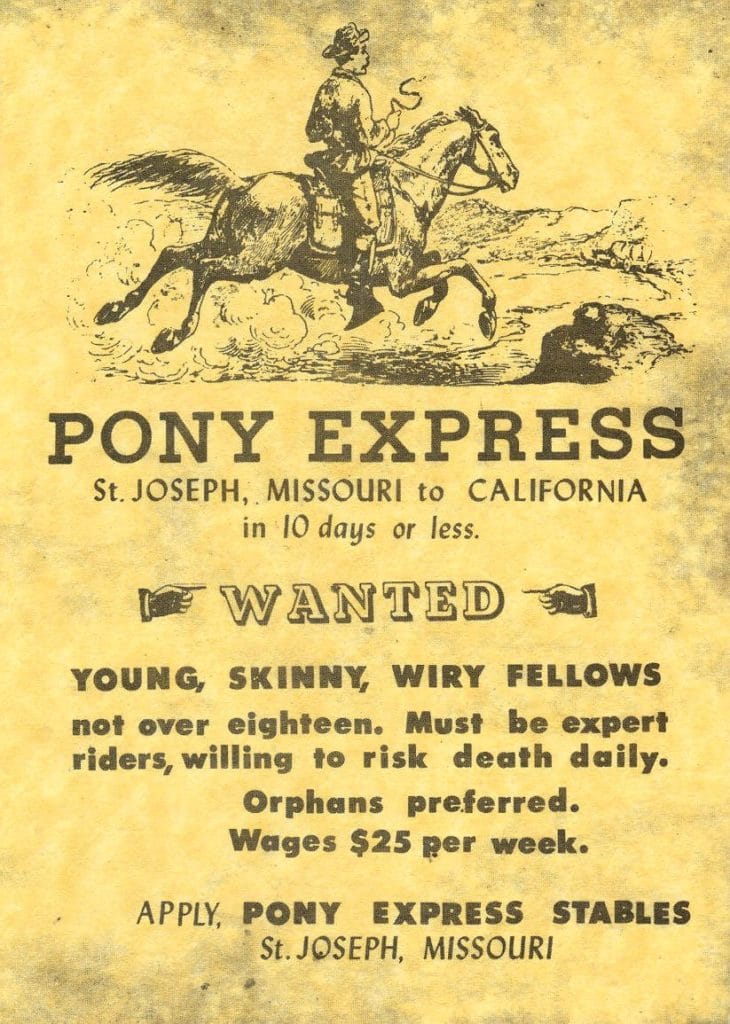
The Pony Express Founders
The three founders of the Pony Express were William Russell, Alexander Majors and William B. Waddell. These three entrepreneurs used a shorted route with riders at relay stations. These stations were about ten miles apart.
The rider coming in could expect a fresh mount [horse] waiting for him and his mail pouch.

Pony Express Peak Operations
At the peak of their operations, Russell, Majors and Waddell employed 6,000 men, owned 75,000 oxen, thousands of wagons, and warehouses, plus a sawmill, a meatpacking plant, a bank, and an insurance company.
Of course, technology waits for no one. The Pony Express could not compete with the faster telegraph. It went bankrupt after 18 months.
Jim DeFelice has written a wonderfully entertaining account of the history of the Pony Express. It’s titled West Like Lightning: The Brief, Legendary Ride of the Pony Express. I love stories about the Old American West. This is one book I simply could not put down.
RELATED: 45 Best National Parks Books (Great Gifts For Park Lovers)
Retracing The Pony Express
One hundred and fifty years later, you can visit trail traces, visitor centers, museums, hiking trails, historic structures and forts related to the Pony Express National Historic Trail. This is another of the amazing Kansas National Parks that is definitely worth seeing and experiencing.
The trail crosses eight states following the journey taken by dozens of young riders and hundreds of horses between St. Joseph, Missouri and Sacramento, California.
The best news of all, however, is that you won’t have to change horses every ten miles. There are auto tour routes, GIS interactive maps and a Back-Country Byway.
Or, you can simply use your cellphone (there’s an app for every thing these days!) to chart a course across the Pony Express National Historic Trail.
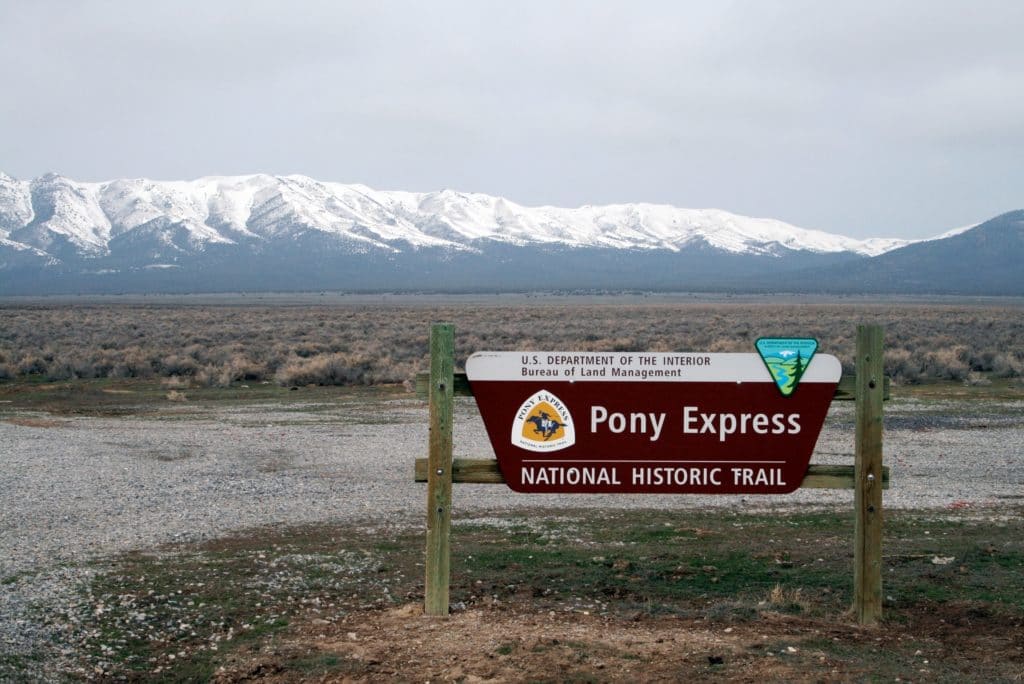
What’s There To Do?
What’s there to do? What isn’t there to do! You can visit interpretive sites, hike portions of the trail, bike portions of the trail or horseback ride portions of the trail (don’t forget about those fresh mounts). There are also museums to visit.
Trail sites to visit in Kansas include: (1) Marshville Pony Express Barn which now serves as a museum. Go there and learn all about how this operation was run. (2) Hollenberg Pony Express Station which is a restoration of an actual station.
It includes living quarters for the Hollenberg family, a neighborhood grocery store, a tavern, and an unofficial post-office. (3) Marshall’s Ferry which is a historic trails park where you can trod the same ground that the Pony Express riders did.
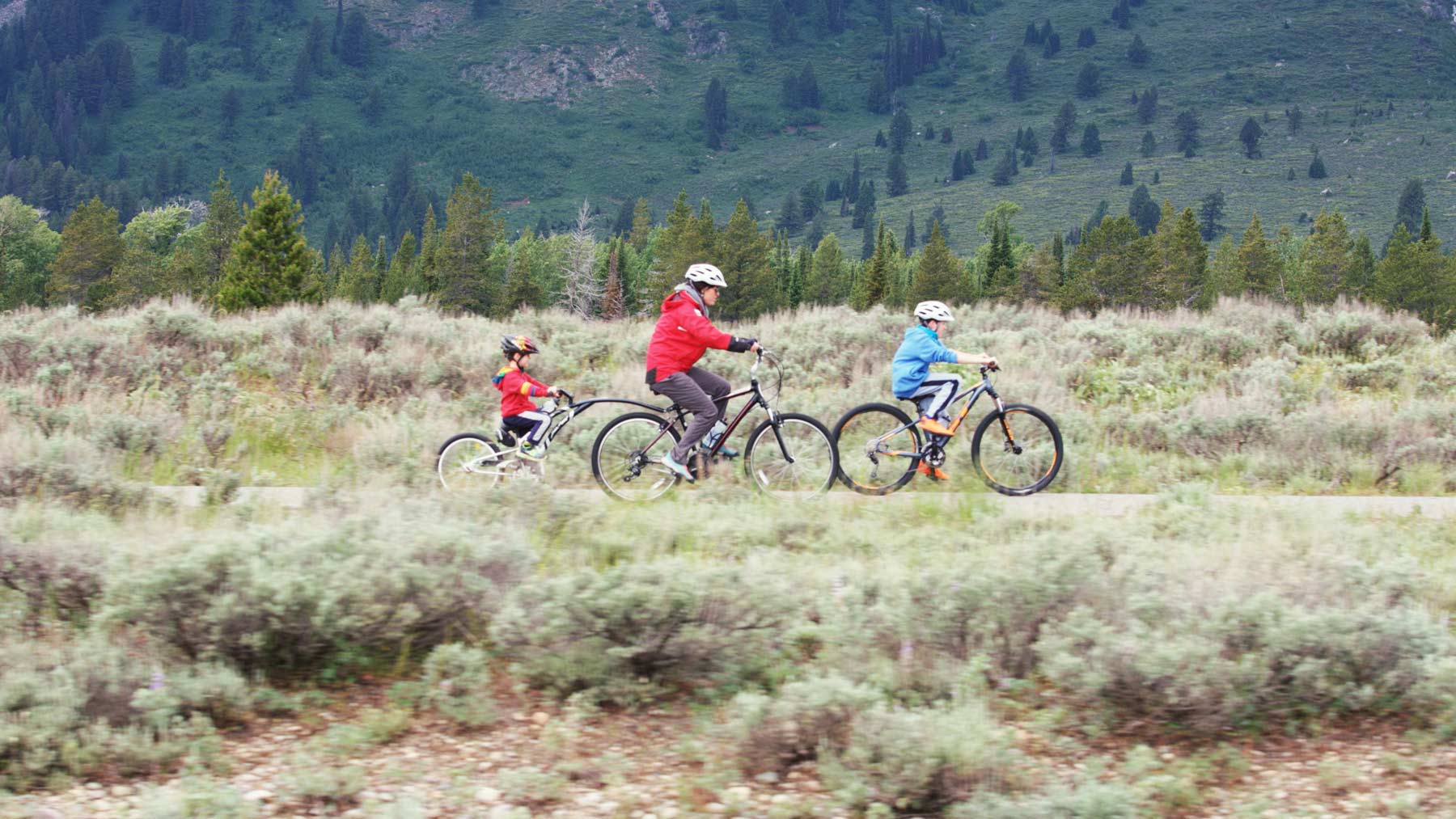
7. Santa Fe National Historic Trail
The Kansas National Parks includes one which played an important role in the Westward Migration.
Westward Ho! Between 1821 and 1880, the Santa Fe Trail was a highway connecting Missouri and Santa Fe, New Mexico. The route was originally pioneered by Missouri trader William Becknell.
Once Bucknell showed how it was done, others decided to follow. By 1825, goods from Missouri were being traded in Santa Fe, as well as other points farther south.
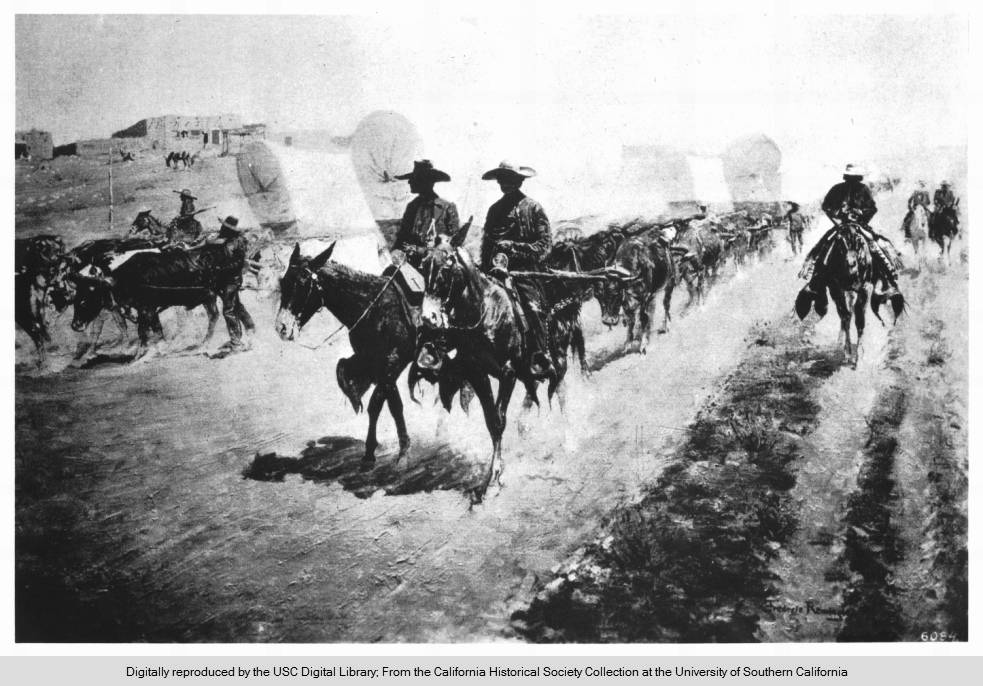
Two Major Routes | Santa Fe Trail
There were two major routes. Some used the Mountain Route, which offered more dependable water, but required an arduous trip over Raton Pass.
Others took the Cimarron Route. It was shorter and faster, but required knowledge of where the route’s scarce water supplies were located. It you ran out of water then you weren’t likely to survive the journey.
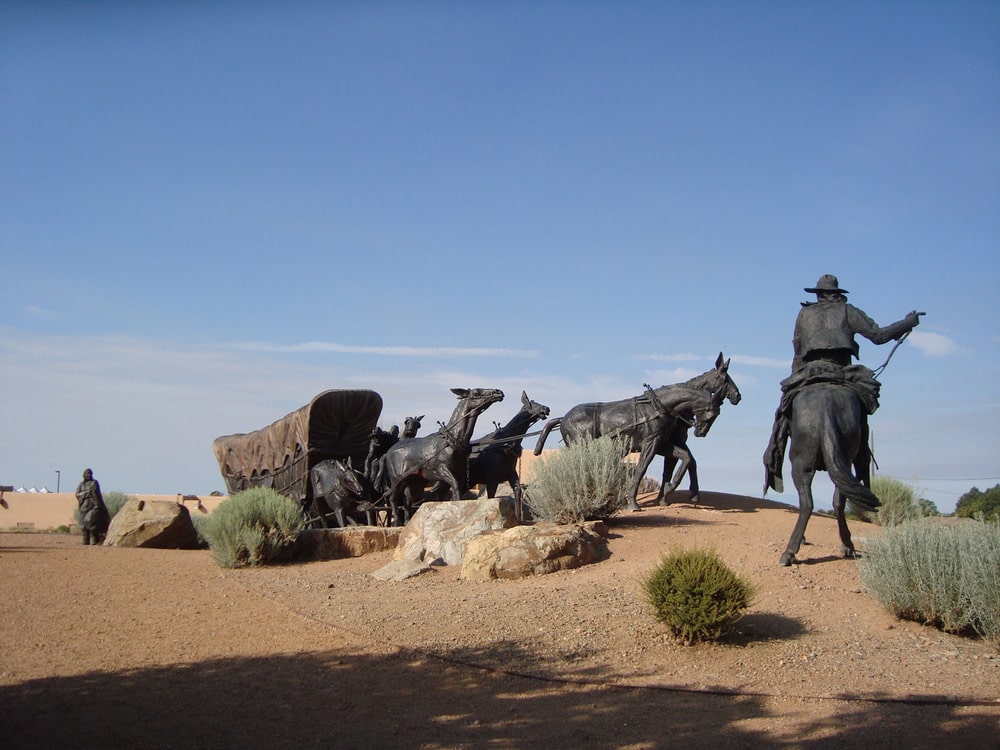
Here’s An Interesting Fact | Santa Fe Trail
Now here’s an interesting fact. During the Mexican-American War, the U.S. Army actually followed the Santa Fe Trail westward to successfully invade Mexico. The Treaty of Guadalupe Hidalgo ended this war in 1848.
Afterward, the Santa Fe Trail became a national road connecting the more settled parts of the United States to the new southwest territories.

The Santa Fe Trail Today
Today, the Santa Fe National Historic Trail still extends from western Missouri to Santa Fe, New Mexico. Along the way, there are museums, historic sites, landmarks, and original trail segments.
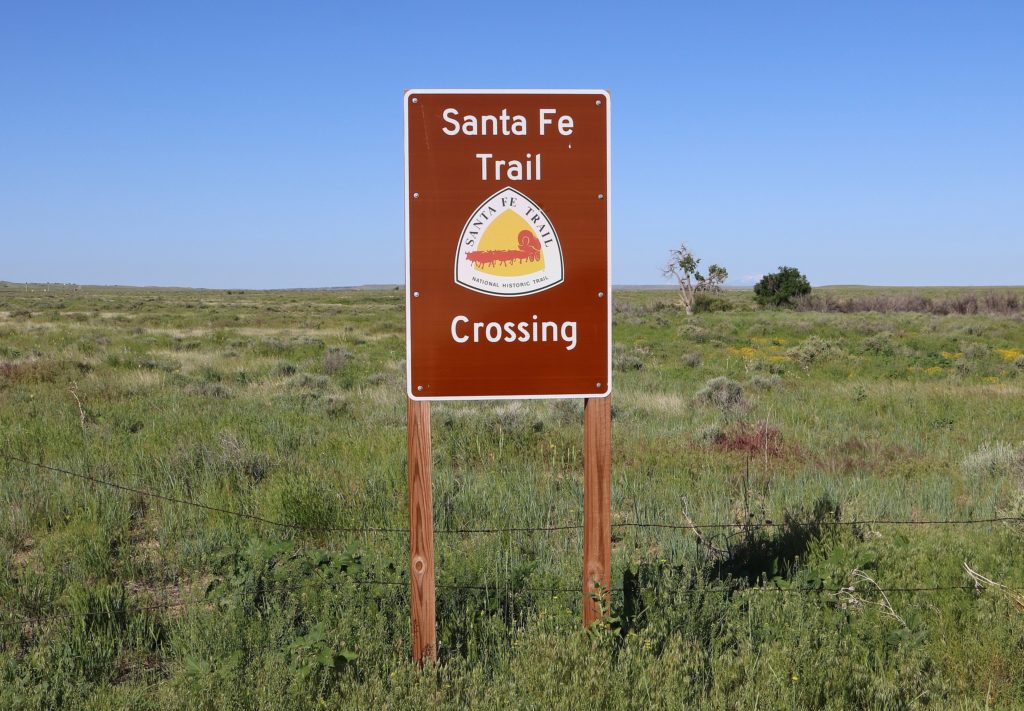
Santa Fe Trail Highlights
If you’re planning a trip then I would recommend that you definitely see the following five sights:
Rabbit Ears Mountain served as a vital landmark for Santa Fe Trail travelers on the Cimarron Route.
Santa Clara Cemetery was a landmark for covered wagon trains and traders going up and down the Santa Fe Trail. It’s now the Wagon Mound National Historic Landmark.
Starvation Peak is a butte that sits at over 7,000 feet, located along Interstate 25 between the town of Pecos and Las Vegas.
Raton Pass which was one of the segments of the Mountain Branch of the Santa Fe Trail. It cut through the snow-capped Sangre de Cristo Mountains, allowing wagons access to the vast western territory.
Santa Fe Spring which was an important water source for Santa Fe Trail travelers heading West.
You may want to do some research before you go, however, as there are other amazing historical and natural sites you may find to be of particular interest to you.
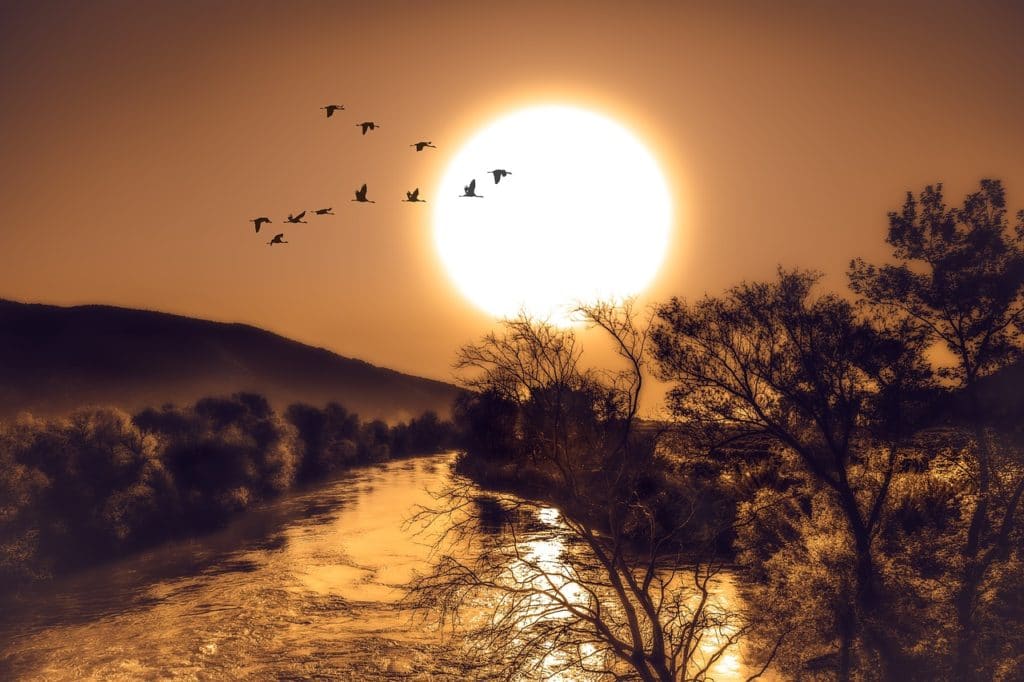
More Kansas National Parks
8. Tallgrass Prairie National Preserve
Once upon a time, tallgrass prairie once covered roughly 170 million acres of North America. It was the continent’s largest continuous ecosystem. It supported a huge quantity of plants and animals.
Of course, with the settlement of America, farmers discovered that prairie soils are outstanding for crop production. So, they plowed the prairie lands into oblivion for the production of wheat, corn and other crops.
What Tallgrass Remains
Today most of these grasslands are gone. What remains, however, is one of Kansas National Parks which gives you an opportunity to experience the incredible beauty of days gone by. It’s located in the Flint Hills region of Kansas.
The Tallgrass Prairie National Preserve protects a small portion of these grasslands. It’s one of the rarest and most endangered ecosystems in the world. And visitors to this scenic wonderland can see the beautiful grasslands which once covered much of America.
The Tallgrass Prairie National Preserve was created by legislation passed on November 12, 1996. It created the 10,894 acre preserve to protect a sample of what was once a vast tallgrass prairie ecosystem.

Stephen F. Jones & Enclosed Ranching
In addition to experiencing these magnificent tallgrasses, visitors can tour a restoration of cattleman Stephen F. Jones‘ ranch called Spring Hill Farm and Stock Ranch.
Stephen F. Jones was a pioneer in what was called “enclosed ranching” whereby cattle movements are limited by stone walls, fences or barbed wire.
Because of his leadership, grasslands which would have otherwise been decimated were saved instead.
A National Historical Landmark District
In 1997, the Jones Ranch was designated a National Historical Landmark District. Today visitors can take tours of his 1881 limestone Second Empire house, the three-story limestone barn, and other outbuildings.
And, while you’re in town, I recommend you take a drive along the 47-miles of the Flint Hills National Scenic Byway on K-177. You’ll marvel at the breathtaking scenery. Just imagine a time when it covered 170 million acres of North America.
CHECK OUT: LIST OF 128 BEST U.S. MONUMENTS RANKED
Check Out Our Grand Teton Film
More Than Just Parks is the ONLY place you can go to find expert guides, beautiful photos, helpful tips, breathtaking films and so much more.
GRAND TETON 8K is the culmination of nearly a month spent filming in the spectacular Jackson Hole Valley and the foothills of the Teton Mountain Range. Encompassing nearly 500 square miles, Grand Teton National Park boasts an awe-inspiring array of pristine wilderness, glacial lakes, winding rivers, diverse wildlife, and the magnificent Teton Range.
Journey with More Than Just Parks as we explore a land dominated by towering peaks, apex predators, and majestic beauty. This is Grand Teton. Filmed primarily in stunning UHD 8K.
To make this film happen we spent nearly a month in Grand Teton National Park during June & July. Of all the films we’ve shot this one features the most wildlife. We captured bison, elk, moose, bears, foxes, beavers, and more.
Grand Teton is situated just South of Yellowstone and while it still sees a significant amount of visitors each year it is far less than its northern counterpart. As one of the most stunning mountain ranges in the world Grand Teton is in a class of its own.
Wild & Scenic Rivers, abundant wildlife, jaw-dropping vistas, and high-alpine beauty comprise this western wonderland.
Kansas National Parks FAQ
Kansas is known for its vast prairies, rolling hills, and natural beauty. The state has one of the most miles of river than any other state in the Great Plains and is home to the world’s largest contiguous tallgrass prairie.
The must-see historic sites in Kansas are the following:
Brown V. Board Of Education National Historic Site
Fort Scott National Historic Site
Fort Larned National Historic Site
Lewis & Clark National Historic Trail
Nicodemus National Historic Site
Seelye Mansion
Coronado Heights
Monuments Rocks National Landmark
Augusta Historic Theater
Geodetic Center of North America
Why Trust Us About Kansas National Parks?
We’re Jim Pattiz and Will Pattiz, collectively known as the Pattiz Brothers (and sometimes the Parks Brothers) and we absolutely LOVE the national parks.
You should probably know that we don’t just make this stuff up out of thin air. We’ve spent our entire adult lives exploring and filming America’s national parks and public lands.
We’ve worked with the National Park Service, the Department of Interior, USDA, and the U.S. Forest Service for years creating films on important places and issues. Our work has been featured in leading publications all over the world and even some people outside of our immediate family call us experts on the national parks.
Meet The Parks Brothers
Map Of Kansas National Parks
We Hope You’ll Follow Our Journey

Our goal here at More Than Just Parks is to share the beauty of America’s national parks and public lands through stunning short films in an effort to get Americans and the world to see the true value in land conservation.
We hope you’ll follow our journey through the parks and help us to keep them the incredible places that they are. If you’re interested in joining the adventure then please sign up below!
Check Out Our Comprehensive Guide
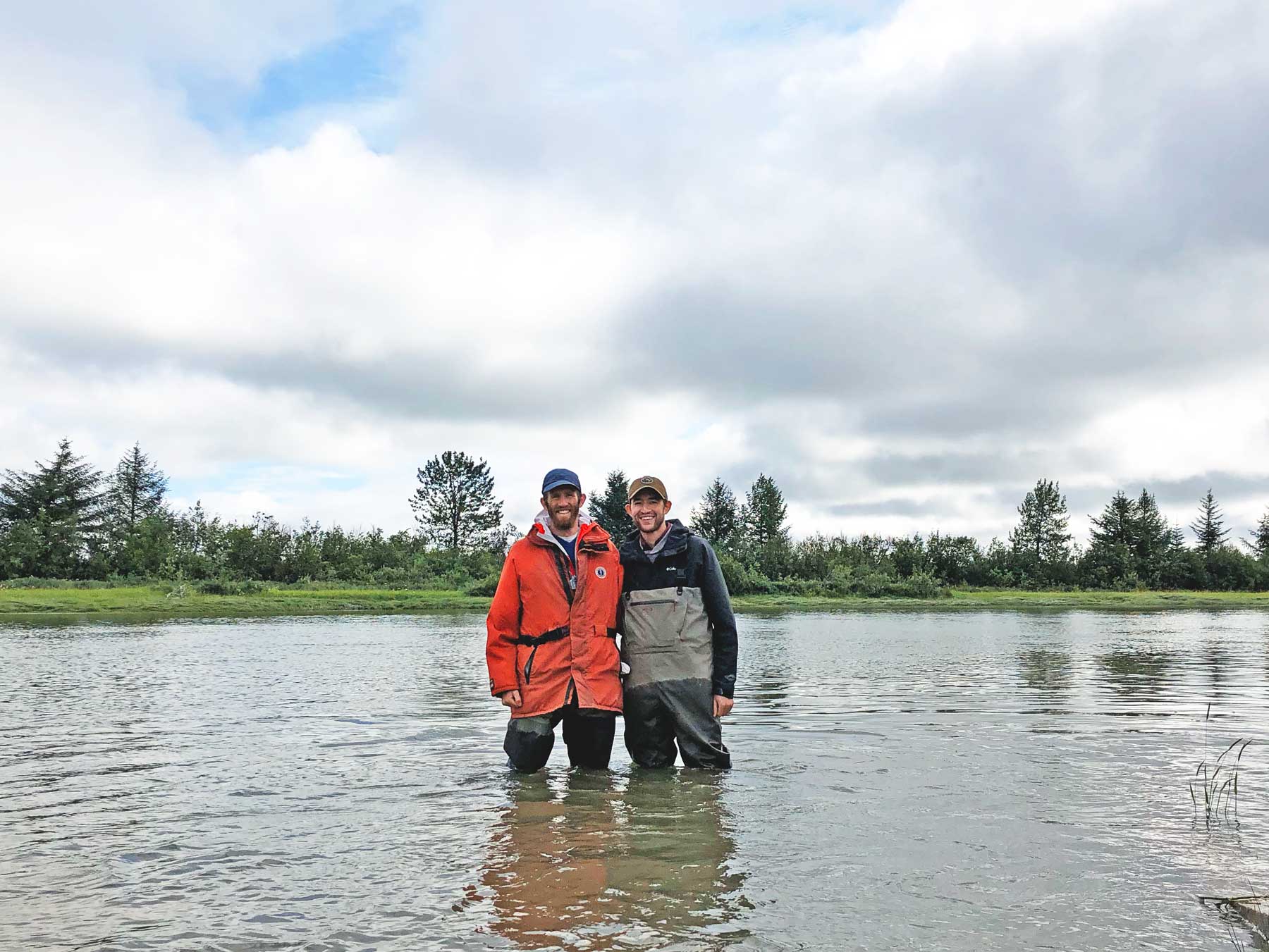
I hope you’ve enjoyed learning about some amazing places to visit in Kansas.
If you’re interested in learning more about our national parks then please check out our complete rankings of all 63 of them.
List Of 8 (Must-See) National Park Sites In Kansas
- Brown V. Board Of Education National Historic Site
- Fort Larned National Historic Site
- Fort Scott National Historic Site
- Lewis & Clark National Historic Trail
- Nicodemus National Historic Site
- Pony Express National Historic Trail
- Santa Fe National Historic Trail
- Tallgrass Prairie National Preserve
Helpful Articles
National Parks: All 63 National Parks Ranked By Experts
National Monuments: Ultimate List Of National Monuments
Landmarks: 25 Famous Bucket List Landmarks In America (MUST-SEE)
Park Rangers: A Brief (& Informative) History Of America’s National Park Rangers
Gifts: 50 BEST National Park Gifts For The National Park Fan In Your Life
Books: 45 BEST National Parks Books
Revolutionary War Sites: 10 BEST Revolutionary War Sites In America
Civil War Sites: 10 BEST Civil War Sites In America
Civil Rights Sites: 10 BEST Civil Rights Sites In America
National Parks In Movies: Look Familiar? 25+ CLASSIC Movies Filmed In The National Parks
Television Shows: Look Familiar? 10+ CLASSIC Television Shows Filmed In The National Parks
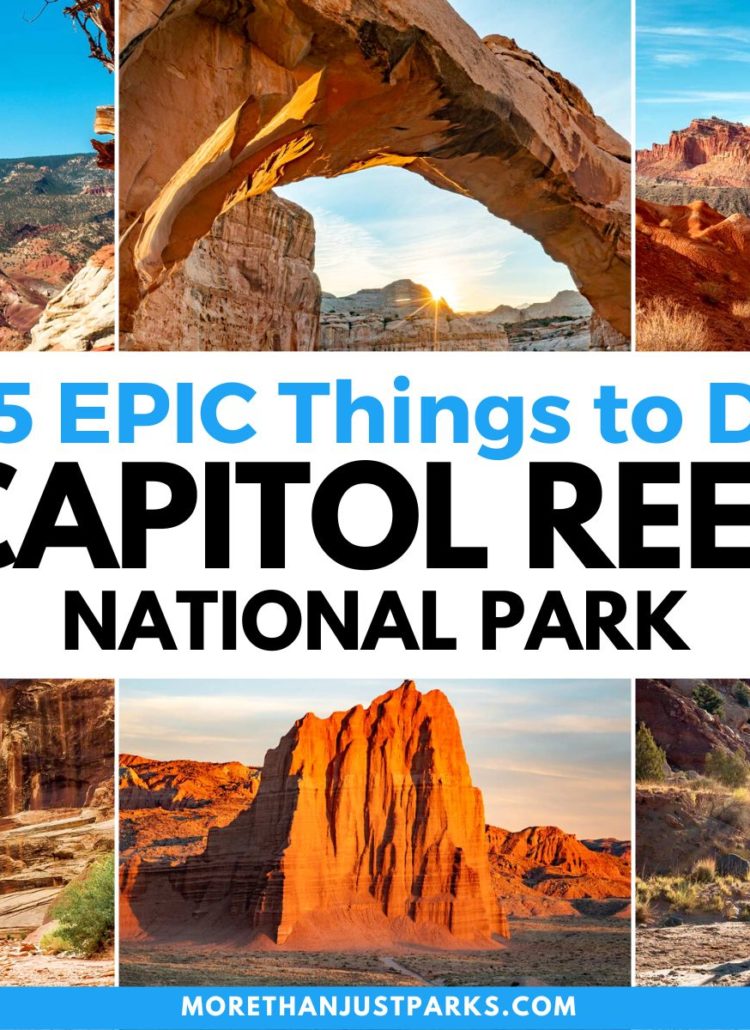
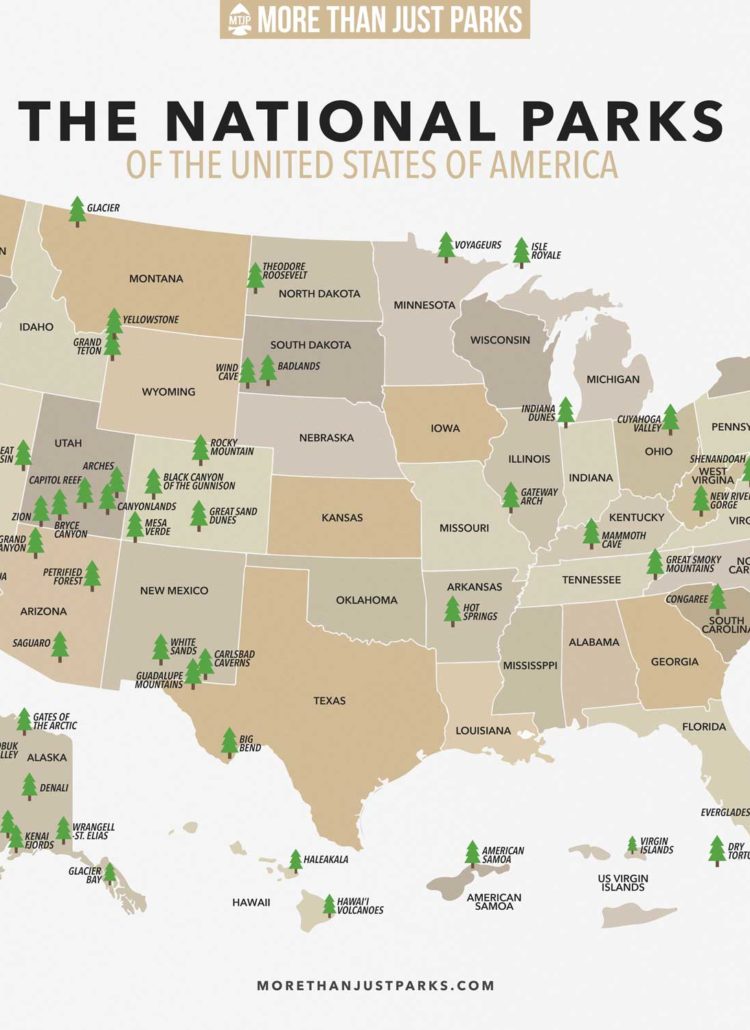
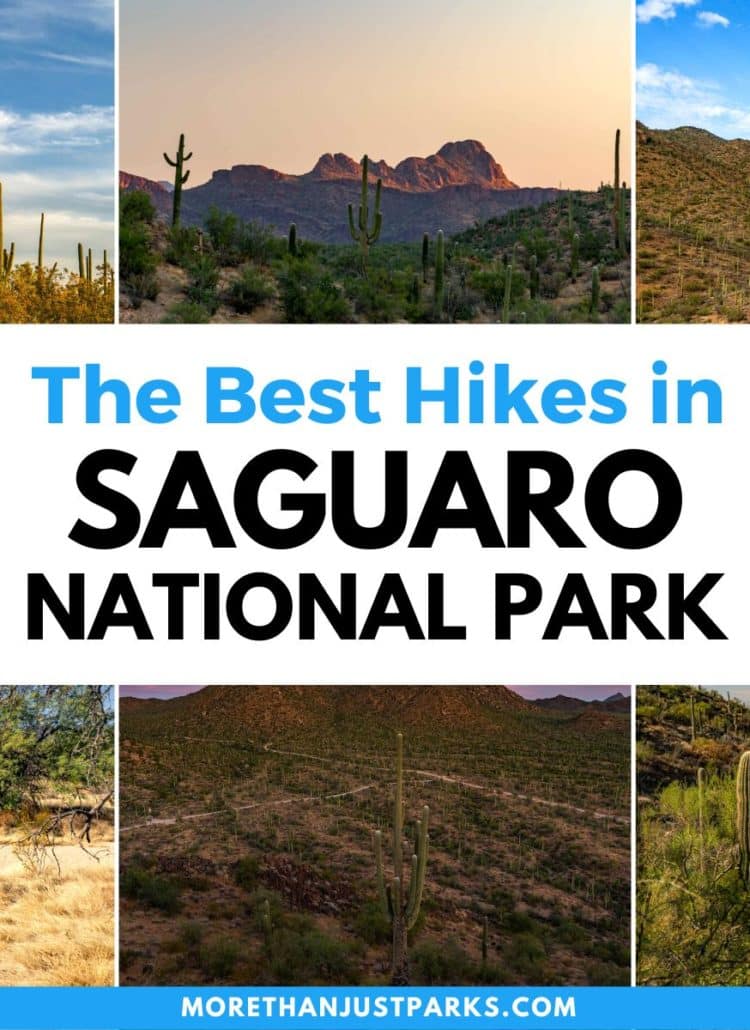
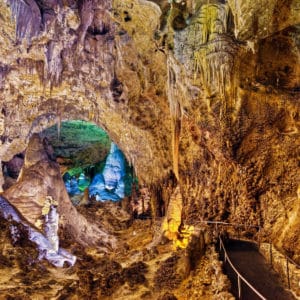

Leave a Reply